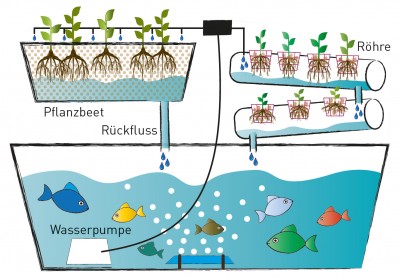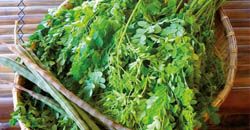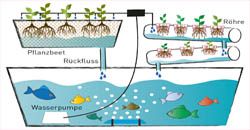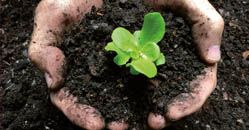Aquaponics
Aquaponics: How does it function, what are the advantages, what preconditions are required?
Aquaponics is the symbiosis of fish farming and vegetable crops in a re-cycling system.
Aquaponics allows to cultivate fish and at the same time grow healthy and high-quality vegetables in an organic cycle.
Function:
The fish live in containers, similar to ponds, as in usual aquaculture. The fish are fed with moringa and other vegetable products. Specific bacteria cultures convert the excrements of the fish within a short time into nitrate. The pond system offers these important bacteria the possibility to settle in the substrate and to do their job of nutrient transformation.
These nutrients are high-quality and organic nutrition for vegetables and a basic condition for healthy growth.
The nutritious pond water is pumped over into plant containers with soil-less substrate (e.g., foamed clay, gravel, lava, etc.). Here, the vegetable plants absorb the high-quality and organic nutrients. By several irrigations during the day, the plants absorb all the nutrients from the water resulting in healthy and strong growth. Then the filtered and oxygen enriched water automatically flows back into the pond. The fish profit from this symbiosis, too - they get the filtered water back including the oxygen which in turn is the precondition for their healthy growth.
Advantages:
Aquaponics allows people with small property (<200 square metres) to supply themselves with vegetables and fish and even sell the excess at the market.
Aquaponics can on approx. 100 square metres of space feed a family and even produce some financial income.
- In approx. 12 cbms of fresh water, monthly approx. 50 kg of fish is being produced.
- At the same time, above the fish basin vegetables are grown that normally on the loamy soil would not thrive (e.g., broccoli, green salad, tomatoes, beans etc.).
Having filled the approx. 12 cbm washbasins with water once, one need only to replenish the evaporated water.
As the whole system is protected by a foil house, neither too strong sun effect nor tropical rain can harm the vegetable plants. The foil also means more protection from insect infestation.
The feed for the fish can be grown on-site. The leaves of the moringa tree provide simple and cheap fish food. Moringa leaves provide the fish with extremely healthy and high vitamin food.
Food leftovers like rice, coconut rasp or sweet potatoes and their leaves also can serve as a feed.
Tilapia fish has been used for many years as farm-reared fish and thus proves suitable for the Aquaponics system.
Important preconditions for the construction of the system:
The fish must be hosted species appropriately, this is vital. Therefore, the number of fish must be in balance to the pond size which is also vital for the organic production of the vegetables.
It takes some experience to keep the organic and sustainable cycle in this biotope in a healthy state.
As an approx. 80 W pump is required 24/7, solar cells will be helpful.
The system works under most simple conditions; given some instruction and technical support, the families can built it themselves.
The necessary material can be altered according to local resources.
The system should be no larger than it takes to sustain a big family so workplaces and a living for everybody should be granted. Possible excess of vegetables and fish can be sold out at the market.






